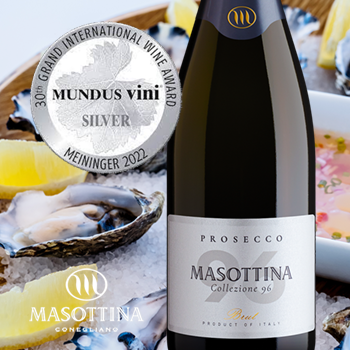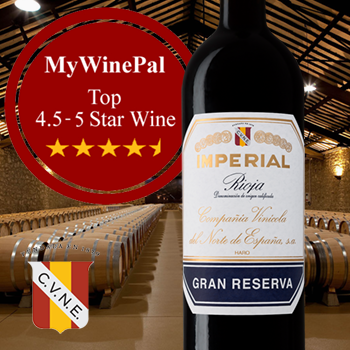
New Zealand is a small country, but packs a big punch in the wine world with their crisp, herbal, and citrusy Sauvignon Blancs, and more recently with their Pinot Noirs. The Pinot Noir grape has been said to be the best grape to demonstrate terroir, with New Zealand the terroir is quite varied from the North to the South Island, and with that a wide range of expressions of the Pinot Noir grape. I was invited to “Get the Dirt on New Zealand Pinot Noir” during a Master Class in Vancouver, that included a panel of winery professionals from New Zealand, together with some home grown BC talent. Wines from 7 different (sub)-regions were presented along with a description of the terroir to help us better understand each wine’s expression in the glass. The wines were chosen blind from each region in New Zealand by the winemakers, so the wines presented should show what is typical of each region.
Following is an overview of each region and my tasting notes for each of the wines tasted. Enjoy.
A Quick Overview of the Regions of New Zealand
New Zealand shouldn’t grow grapes but can because of the thermal blanket caused by the ocean surrounding it. The climate is subtropical to subarctic extending from the North Island down to the South Island. Grape production is dominated by the Marlborough region and is reigned by the Sauvignon Blanc grape.
But, Pinot Noir is the rising star in New Zealand. It has a cross between New Zealand purity and some of the Old World character. There is purity of expression of fruit that few regions can achieve according to the New Zealand panel, with the purity of expression based on climate. New Zealand is blessed by temperate daytime temperatures and cool nights, allowing for grapes to fully mature while also keeping their vibrant acidity. New Zealand has 5x the acreage compared to BC and is ranked 4th in the world for Pinot production. 70% of New Zealand vines are less than 12 years old, which IMHO are not that old, and it should be very interesting when the vines continue to age and see how the grape flavours evolve.
The soils in New Zealand are primarily from river out wash (producing gravels). In Central Otago there is glacial activity as well as river out wash. North Otago (Waitaki) is a new wine region that has limestone soils.
Our Pinot Noir Tour in a Glass
Nelson

An interesting but small region. 2012 was a difficult year, cool season. Warm fall saved the harvest. 2-3 weeks later harvest. Nelson is much more temperate climate to Marlbourgh. Not as much diurnal range. Wines from this region are typified as being fragrant, complex, softly textured with bright cherry and plum flavours. Our wine:
Waimea Estate Pinot Noir, Nelson, 2012 (Waimea Plains) – Quite light garnet in colour. Nice sweet red and sour cherries, together with some roses on the nose. Light soft mouth feel. Roses and tea leaves, followed by red cherries and a hint of peppery spices in the background. Good level of acidity that keeps this wine fresh and delicate. Nice.
Marlborough

In Marlborough 10 years ago, Sauvignon Blanc would be the most important and widely planted grape. Marlborough now dominates Pinot Noir production in New Zealand. There is variability of Pinot Noir here due to unique climate/terroir within Marlborough. We tasted wines from 4 sub-regions: Waihopai Valley, Wairau Valley, Southern Valleys, and Awatere Valley. You get maritime influence along the coast which does move up the alleys. The valleys range from Alluvial soil to clay (in the southern valleys). Typically this region is known for bright red fruit, raspberries and plum flavours, a linear structure with even tannins. Our wines:
Ara Select Blocks Pinot Noir, Marlborough, 2012 (Waihopai Valley) – This wine was quite deep garnet in colour, with ripe smoky strawberries and cloves on the nose. Medium body, silky with red fruit, raspberries and red cherry flavours, and a hint of spice and flowers. A bit stronger tannins with a long finish.
Cloudy Bay Pinot Noir, Marlborough, 2012 (Wairau Valley) – Cloudy Bay is at a warmer site characterized with stony soils which helps make riper fruit. It had a light intensity strawberry and cherry nose. Medium minus body, mineral, with red cherries, strawberries, and sweet spice on the palate. The tannins picked up on the finish.
Auntsfield Single Vineyard PInot Noir, Marlborough, 2012 (Southern valleys). The Southern valleys have clay-based soil, which holds in water and helps to drive the richness of flavour, and has a cooler climate, which results in later ripening (that can also enhance grape flavour and richness). This wine was quite deep garnet in colour, with a prune and savoury nose. Full body, dry and soft, with ripe dark cherries followed by some dark chocolate flavours. The acidity provides tingling freshness. I really liked this wine.
Tohu Rore Reserve Pinot Noir, Marlborough, 2012 (Awatere Valley) – Tohu is the first Maori-owned winery in New Zealand. The Awatere Valley is a fringe area to grow grapes. It is at the south end of the region and is frost prone, being located 330m asl. This wine was pale garnet in colour. Earthy, cherries and strawberry aromas with a hint of capsicum (which can come from grapes not being fully ripe). Light body, soft with strawberries, red fruit and tea leaves on the palate.
Waipara Valley

The Waipara Valley has areas of limestone along with the alluvial river gravels. The wines of this region typically show red fruit and darker plummy sweet fruits, with hints of pepper and spice, along with firm tannins and acidity. For our two wines from this region, Pegasus Bay is situated on alluvial river gravels, while Greystone has limestone based soil. There is a difference in savory chalky flavour you get in Greystone vs opulent character of Pegasus Bay. We should be getting more tannins as we move to a warmer region. Our wines:
Pegasus Bay Pinot Noir, Waipara Valley, 2011 – LIght intensity nose with aromas of cherries, vanilla and some leafiness. On the palate, mineral with ripe red fruit, some spice, and a peppery finish.
Greystone Pinot Noir, Waipara Valley, 2011 – Medium minus garnet in colour. Light, sour cherries nose. Dry with higher acidity. Mineral with light orange and cherries followed with spice. Very clean finish.
Waitaki Valley

Move 300 km south of Waipara to Waitaki Valey. It has more limestone soil. Southern sloping hills to the north. This is the new aspiring region (Northern Otago). The wines show dark fruit, savoury, lavender, and herbal charcteristics.
John Forrest Estate Collection Pinot Noir, Waitaki, 2011 – Wild aromas on the nose with meatiness and tomatoes. Medium body, mineral with light intensity sour cherries, flowers/violets and sweet spices on the palate. A very intruiging wine.
Central Otago

This is the world’s most southerly wine region. It has 6 subregions, and we tasted wines from 3 sub-regions. Gibbston Valley is a cooler site. Bannockburn is a warmer climate and gets 1 month more ripening time than Gibbston. In Bannockburn you get black cherry flavours, and thicker skins from the increased amount of sun, resulting in more tannins. Bendigo is warmer and located at the valley floor. It is at the same latitude as Salem Oregon, and produces small berries in this region. The reason for the smaller grapes is that Bendigo gets strong winds each day drying the leaves and berries, concentrating the fruit. With the smaller berries you get more skin to pulp which results in more tannic structure. Overall the region’s wines show black cherry and fresh herb flavours, and have firm tannins/acidity. Our wines:
Coal Pit Tiwha Pinot Noir, Central Otago, 2011 (Gibbston Valley) – Smoky strawberries and cherry aromas. Medium plus body with a silky mouth feel. Has some sweetness at the back of your mouth throughout your sip. Soft red fruit flavours and herbs, with smokiness being quite prominent. Spicy on the finish. An excellent wine.
Akarua Pinot Noir, Central Otago, 2011 (Bannockburn) – Candied cherries and vanilla on the nose. Medium body, soft and silky, with violets and ripe red cherry flavours, and light vanilla. It gets hot on the mid palate. Nice medium level of acidity makes the wine finish clean.
Quartz Reef Pinot Noir, Central Otago, 2011 (Bendigo) – Smoky strawberries, red cherries and vanilla on the nose. Medium body, round soft mouth feel, but firmer tannins. It has soft red cherry flavours. This wine had more tannic structure than the other two wines.
Wairarapa

Moving to the North Island we have Wairarapa. Most wineries are family owned. It is a fairly windy region compared to Marlborough across the channel. It has a classic herbal and spicy style. The Ruamahunga River that runs through the region has carved out cliffs and escarpments to expose stony sub-soils, and built up layers of alluvial river terraces. The wines from this region typically have a more lifted cherry flavour compared to the Martinborough sub-region, plus show plum and tobacco flavours. Our wine:
Gladstone Vineyard Pinot Noir, Wairarapa, 2011 – Very pale garnet colour. Light cherries and tea leaves on the nose. Soft mouth feel but has a higher level of acidity acidity. Light intensity flavours of tea leaves, cherries and apples, together with a mineral streak, and spiciness on the finish. A very elegant wine.
Martinborough

This is where Pinot Noir started 35 years ago in New Zealand. Martinborough is located in the north end of the Wairarapa region. Martinborough accounts for only one percent of New Zealand’s wine production, from approximately 3 percent of New Zealand’s total plantings by hectare. The wines from this region typically are fuller bodied, more supple, with plum, chocolate and meat characteristics. Our wine:
Escarpment Pinot Noir, Martinborough, 2011 – A different nose, with green peas, curry and cherry aromas. Medium minus body, soft mouth feel, mineral, with light red cherry flavours. Slightly grippy tannins on the finish.
Food Pairings

Wine and food naturally go together, and each affects the other. After tasting each wine on it’s own, we also tried the wines with a selection of appetizers: Halibut with chorizo sausage, Asian chicken potsticker (with ginger and cabbage) with burdock root on the side, Tuna tataki with microplaned wasabi and tamari soy sauce, and Spicy curried portobello mushrooms with vegetable pakora. Which wines did I think paired nicely with these dishes?
Cloudy Bay Pinot Noir, Marlborough paired nicely with the Tuna tataki.
Auntsfield SIngle Vineyard Pinot Noir, Marlborough paired with the halibut and the potsticker for me. The halbut was a complementary pairing. I liked the earthiness of the potsticker with theis wine.
Tohu Rore Reserve Pinot Noir, Marlborough, with it’s lighter body balanced nicely with the halibut.
Pegasus Bay Pinot Noir, Waipara Valley, paired both with the potsticker and with the tuna tataki.
Greystone Pint Noir, Waipara Valley went nicely with the halibut and the mushroom curry. The pairing with the curry brought out the pepperiness in the curry.
John Forrest Estate Collection Pinot Noir, Waitaki also paired nicely with the curry.
Coal Pit Tiwha Pinot Noir, Central Otago paired with the halibut, bringing out smoky and peppery flavours from the wine.












